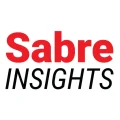By Richard Ratliff, Executive Scientist at Sabre Labs, and Sergey Shebalov, VP and Head of Research at Sabre Labs
The use of advanced AI/ML (artificial intelligence/machine learning) technology has a rich and growing history in the airline industry. This article explores five new ML-based applications that are providing airlines with new opportunities for additional revenue generation and improved customer service:
- Dynamic pricing and availability of airfares
- Air ancillary dynamic pricing
- Experimentation engines
- Market size forecasting
- Disrupted passenger flight re-accommodation
This article is Part 1 of a three-part series.
- Part 1: How AI/ML is used by airlines today and the first of five new AI/ML applications: dynamic pricing and availability of airfares.
- Part 2: Three more new AI/ML applications: air ancillary dynamic pricing, experimentation engines and market size forecasting.
- Part 3: New tools for handling passenger reaccommodation and a brief overview of how cloud-based computing and improved machine learning operations (MLOps) are making AI/ML more useful and powerful than ever.
How is AI/ML used in the airline industry today?
Readers who are familiar with computer-aided decision support systems may have heard terms such as artificial intelligence, machine learning, operations research and computational statistics. The distinctions between these fields are mostly academic, and the techniques they use are often related. For business purposes, the broad term AI/ML is often used to describe these technologies.
Although there are many articles proclaiming the AI/ML revolution and massive growth in adoption worldwide, AI/ML technology has been in broad use for decades in the travel industry. Many of the most important departments in modern airlines use AI/ML technology at scale. Examples include airline network planning, flight scheduling, pricing and revenue management, operations, crew planning, maintenance and engineering, cargo, etc.
Although AI/ML models have had a big impact on the airline industry, earlier implementations had limitations. Previous architectures and development processes made it difficult to integrate different models and considerable manual intervention was needed to keep models up to date with recent data. The newer applications use a modern, cloud-based, microservices architecture with improved scalability and automation for the ML models.
New AI/ML applications for airlines
Dynamic pricing and availability of airfares
Airline dynamic pricing is a term that has been used in many different contexts, usually as some type of automated pricing tool. At Sabre, we refer to dynamic pricing of airfares to describe an engine that can help airlines provide tailored offers to different customer segments, considering a carrier’s revenue management controls and data signals on the current competitive marketplace.
A close cousin to dynamic pricing is dynamic availability. With dynamic availability, rather than directly modifying the price amounts, an airline’s availability controls are updated (either by closing or opening booking classes). The airline’s ability to modify prices in real-time with dynamic pricing provides the maximum revenue performance, but today it is limited only to airline direct channels and NDC offers. On the other hand, dynamic availability changes can be applied across all GDS selling channels, so while the revenue performance of each change is slightly less, the total applicable sales base is larger. Thus, both approaches are used by airlines today.
The latest, most advanced versions of airline dynamic pricing in use today involve what we refer to as Market Adaptive Pricing (MAP) models. MAP processing uses real-time (or recent) competitive air low fare search results to understand an airline’s competitive positioning, considering both price and schedule quality aspects. Optimization models are used to estimate probability of selection and expected profit of available itineraries.
MAP models can optimize airline itinerary prices based on (intuitive) tradeoffs between customer selection probability and yield. If an airline raises its itinerary prices, yields improve, but the customer selection probabilities for that airline itinerary and fare will drop. Conversely, if an airline lowers its itinerary prices, yields drop, but the selection likelihood increases. The optimization engine recognizes these tradeoffs and searches along the entire spectrum of price points to find the set of itinerary prices that maximize expected profit while considering customer selection probabilities (conditional on both the price and quality of other airline itineraries that are currently available).
Dynamic pricing involves moving away from traditional, static filed fares and instead provides the flexibility to charge any price at any point in time. Note that revenue management controls are a critical input, and airlines are careful to avoid lowering prices beyond the revenue management system bid prices (i.e. below the estimated economic opportunity costs). But the use of current competitive shopping data and MAP models allows airlines to fine-tune the actual prices to realize revenue performance that is above and beyond what is possible using only their revenue management system controls.
In practice, the use of this additional information coupled with AI/ML technology has been shown to provide up to 3% revenue gains.
These gains are incremental to what an airline realizes from its revenue management system, and they arise from more customized offer decisions, continuous price points instead of fare classes (see illustration below), and the ability to manage prices with finer granularity (i.e. at the roundtrip level rather than departure date only for traditional inventory control). This finer-grained, continuous pricing also benefits travelers because they gain access to new price points that were previously unsupported. For more information see:

Read Part 2 of this three-part series in which we examine three more new AI/ML applications for airlines: air ancillary dynamic pricing, experimentation engines and market size forecasting.
About the Authors

Richard Ratliff, Executive Scientist at Sabre Labs, has held roles of increasing responsibility in IT at Sabre for over 30 years with a focus on travel retailing and revenue management.

Sergey Shebalov, VP and Head of Research at Sabre Labs, leads a team responsible for the development and implementation of decision support systems in the travel industry. Sergey holds a PhD in math from the University of Illinois and has two decades of experience in airline and agency IT.
Keep the lines of communication open
Be the first to know when we release new information on emerging technology, upgrading of existing systems, or updates to our point of view on the future of travel retail.





